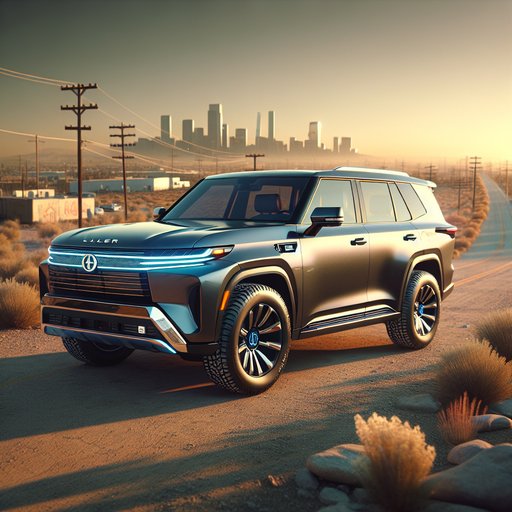
We spent a day with the just-launched 2024 Toyota Land Cruiser on a launch-program route mixing urban traffic, freeway cruising, and a short off‑road loop. These are first-impression takeaways focused on how it performs in everyday use, not a long-term verdict.
The new Land Cruiser rides on Toyota’s TNGA-F body-on-frame platform and is sold in the U.S. exclusively with the i‑FORCE MAX 2.4‑liter turbocharged hybrid: 326 hp and 465 lb‑ft paired to an 8‑speed automatic and full-time 4WD with a two-speed transfer case. As equipped, our mid-trim tester weighed around 5,000 pounds, rolled on 18-inch all-terrain tires, and included the Stabilizer Bar Disconnect, Multi‑Terrain Select, and Crawl Control. Towing is rated at up to 6,000 pounds, and EPA combined economy is in the low‑20s mpg depending on trim.
Our loop covered roughly 120 miles at 55–78°F with light winds: 50 miles city, 55 highway, 15 mild dirt and ruts. We ran in Normal most of the time, with brief stints in Sport and 4LO. The trip computer showed 22.3 mpg overall (on 87 octane), roughly aligning with EPA figures. Payload included two adults and about 75 pounds of gear.
Tire pressures were set to 36 psi cold per the door placard. Off the line, the hybrid’s torque fills in early; the Land Cruiser steps smartly into traffic without the lag you might expect from a small-displacement turbo. The 8‑speed shifts cleanly and keeps revs low; kickdowns are decisive but not abrupt. Climbing a freeway on‑ramp, the system blends electric assist smoothly, though the four-cylinder can sound coarse under heavy load.
Brake feel—blending regen with friction—is mostly natural, with a hint of softness at the top of the pedal around parking-lot speeds. Ride quality is controlled rather than plush. On broken city pavement the body stays composed with quick rebound control, and the extra sidewall from the 18s helps. Steering is light but accurate, and high-speed lane changes are tidy for a body‑on‑frame SUV.
On the dirt section, selecting 4H and engaging the Stabilizer Bar Disconnect noticeably improved articulation; traction control logic was conservative but effective, and Crawl Control remains noisy yet useful for steep, loose descents. Cabin usability impresses: clear sightlines, large physical climate knobs, and a responsive 12.3‑inch infotainment screen with wireless Apple CarPlay/Android Auto. Second-row space is adult-friendly, and the cargo area is squared-off, though the load floor is high. Interior materials are durable more than luxurious in mid trims.
Driver assists (Toyota Safety Sense 3.0) worked as advertised; adaptive cruise tracked smoothly, and lane centering was steady without ping‑ponging. Wind noise builds from the mirrors above 70 mph, and the A/T tires contribute a low hum on coarse concrete. First impressions are strong: this Land Cruiser feels authentically capable without becoming a chore in daily use. If you prioritize third-row seating or heavy towing, competitors may suit you better; otherwise, the blend of manageable size, hybrid torque, and real off‑road tools is compelling.
Prospective buyers should test both wheel/tire setups and verify ride/road noise tolerance on their local highways before deciding.












